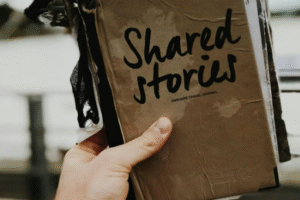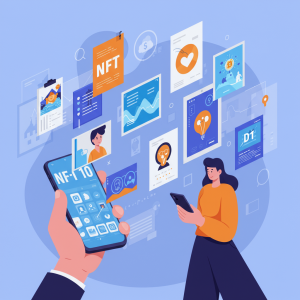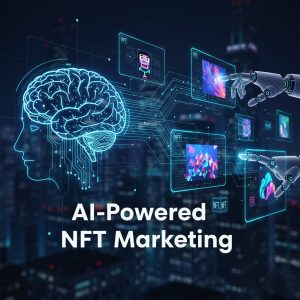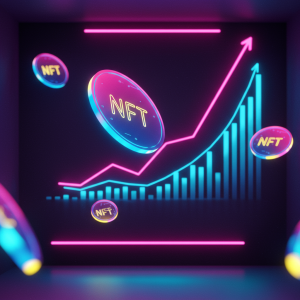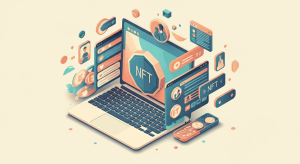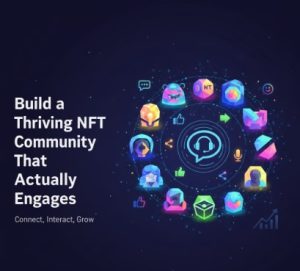NFT Utility Beyond Art: Functional Applications

The conversation around NFTs has evolved significantly since the early days of pixelated avatars and digital paintings. While artistic expression remains central to many NFT projects, the technology’s true potential extends far beyond aesthetic value. Today’s most innovative projects are embedding tangible utility into their tokens, transforming them from mere collectibles into functional tools with real-world applications and benefits.
Access as Utility
Perhaps the most immediate form of NFT utility comes through access. Ownership of specific tokens can serve as digital keys unlocking exclusive experiences, communities, and opportunities. Unlike traditional membership models, these access rights can be transferred, sold, or leased, creating dynamic economies around participation.
The Flyfish Club exemplifies this approach by tokenizing restaurant memberships. Token holders gain access to exclusive dining experiences in their members-only seafood restaurant. This arrangement transforms a typically static relationship (traditional restaurant membership) into a liquid asset that members can sell when they no longer desire access.
Similar models have emerged across various industries, from professional networking groups to fitness studios and entertainment venues. The verification simplicity of blockchain ownership makes NFTs particularly suitable for access control without cumbersome administrative systems.
For those interested in implementing access-based utility, our guide on implementing token-gated experiences provides technical frameworks and strategic considerations for various business models.
Participation Rights
Beyond simple access, NFTs increasingly confer participation rights within organizations and creative processes. These rights might include voting privileges, creative direction input, or revenue sharing from project outcomes.
The Nouns DAO demonstrates this approach by distributing governance tokens that grant holders voting rights over a shared treasury. Each Noun represents one vote in determining how the community allocates resources, sponsors initiatives, and evolves the project. This structure transforms token holders from passive collectors into active stakeholders with genuine influence.
Participation utility creates particularly strong community alignment by ensuring that token holders benefit directly from contributing to project success. When executed thoughtfully, these mechanisms create virtuous cycles where community input improves project outcomes, potentially increasing token value.
Real-World Asset Connections
The boundary between digital and physical assets continues to blur as NFTs increasingly function as claims on tangible items and experiences. Beyond simple merchandise redemption, sophisticated projects are creating frameworks where digital ownership reflects or influences physical reality.
Wine and spirits producers have pioneered this approach, with companies like BlockBar offering NFTs that represent ownership of physical bottles stored in secured facilities. Token holders can redeem their NFT for the physical product, sell the token to another collector, or hold it as the underlying asset potentially appreciates. This model solves authentication challenges while creating new liquidity for traditionally illiquid collectibles.
Real estate applications have likewise emerged, with properties being fractionalized through NFTs that represent ownership shares. These arrangements democratize access to investment classes typically reserved for wealthy individuals while providing liquidity previously unavailable in property markets.
Functional Digital Assets
Within purely digital environments, NFTs increasingly function as genuinely useful tools rather than passive holdings. Gaming represents the most mature implementation of this utility, with NFTs serving as playable characters, functional equipment, or land parcels that generate resources.
Unlike traditional in-game purchases, these assets typically operate across multiple experiences, retain value outside specific applications, and remain player-owned regardless of the original game’s continued operation. This ownership model represents a fundamental shift from the publisher-controlled virtual economies that dominated early gaming.
Beyond gaming, functional digital assets include productivity tools, digital workspaces, AI training data access, and components for creative projects. These utilitarian applications focus on what the token enables rather than its inherent collectibility.
Identity and Credentialing
As digital identity becomes increasingly important, NFTs offer promising frameworks for verifiable credentials, reputation systems, and persistent identity across platforms. Unlike traditional credentialing systems, NFT-based solutions allow individuals to maintain control over their data while providing cryptographic verification.
Educational institutions have begun experimenting with course completion certificates as NFTs, allowing graduates to maintain permanent, verifiable records of their achievements without depending on centralized verification systems. Professional certifications have followed similar patterns, creating portable proof of expertise that candidates can seamlessly share across employment platforms.
These systems benefit from the tamper-resistance of blockchain records while potentially reducing administrative overhead for issuing organizations. For credential holders, the self-sovereign nature of these assets eliminates dependence on original issuers remaining operational or accessible.
Tokenized Intellectual Property
Creative industries face persistent challenges around intellectual property management, licensing, and royalty distribution. NFTs offer innovative frameworks for addressing these issues through programmable licensing terms and automated royalty payments.
Musicians have pioneered these approaches, using NFTs to represent partial ownership of songs or albums. These tokens entitle holders to portions of streaming royalties, creating new funding models where artists can maintain creative control while sharing financial upside with supporters. Similar models have emerged for film financing, publishing, and other creative endeavors.
Smart contract functionality allows these arrangements to operate with minimal administrative overhead, automatically distributing revenues according to predetermined formulas. This efficiency makes micro-licensing and fractional ownership practical at scales previously unviable due to transaction costs.
Community Infrastructure
Some of the most compelling NFT utility comes through community infrastructure development. Projects focused on this approach create tools, platforms, and resources that become more valuable as adoption increases. Token holders benefit both from direct utility and from the network effects generated by growing user bases.
The ENS (Ethereum Name Service) exemplifies this approach, offering human-readable blockchain addresses that function across multiple applications. By simplifying interactions with blockchain systems, these services create genuine utility while potentially appreciating as digital identity solutions grow more important.
Integration Across Utilities
The most sophisticated NFT projects rarely focus on single utility expressions. Instead, they create ecosystems where tokens serve multiple functions simultaneously. A single NFT might provide access to exclusive events, confer governance rights, generate periodic rewards, and serve as a digital identity marker.
This layered utility creates resilience by ensuring that tokens retain value across various use cases even if particular applications decline in relevance. This diversification represents an evolution from early NFT projects that often relied solely on speculative value or aesthetic appreciation.
Conclusion
As the NFT ecosystem matures, utility-focused projects increasingly distinguish themselves from purely speculative offerings. While artistic merit and community identity remain important aspects of successful projects, embedded functionality provides sustainable value propositions that transcend market cycles.
The most promising NFT applications combine technological innovation with thoughtful economic design, creating systems where token ownership delivers tangible benefits beyond potential appreciation. By focusing on genuine utility, projects can build sustainable ecosystems that benefit creators, collectors, and broader communities regardless of market conditions.



